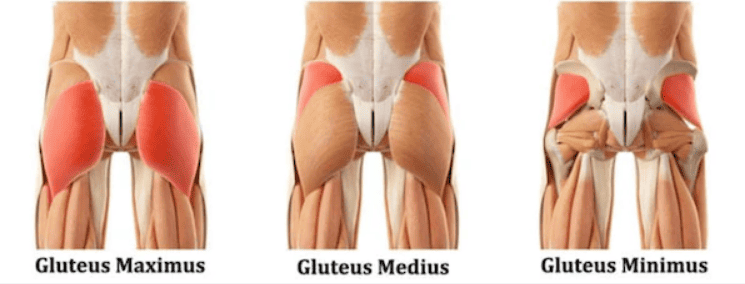Cable kickbacks should be included in your exercise routine if you want to shape your glutes and have that flawlessly toned, lifted look.
This workout, also known as cable glute kickbacks, cable kickbacks, or glute cable kickbacks, is a very efficient approach to working and improving your glute muscles.
Cable kickbacks for the glutes are among the best exercises to target this area, as they simultaneously activate the gluteus maximus, medius, and minimus muscles.
The glutes, made up of the gluteus maximus, medius, and minimus, are the strongest muscles in the human body. These muscles are in charge of maintaining hip mobility and stabilizing the pelvis.
And the best thing is you can easily adjust the weight and resistance with the cable machine, making it suitable for all fitness levels.
So, let’s dive into how to do cable kickbacks and why they benefit your glutes.
Why Do Cable Glute Kickbacks?

Cable glute kickbacks are an effective way to strengthen your glutes and improve your overall physical performance. This exercise is performed using a cable machine, which allows for resistance training that isolates the glutes, which is more effective than squats.
The glute cable kickback targets the gluteus maximus, the most significant muscle in your glutes. This exercise involves extending your leg backward against the resistance of the cable machine, which strengthens and tones these muscles.
Research shows that squats and lunges are not the only exercises for the glutes; cable kickbacks are also practical exercises for building glute strength.
With squats and lunges, you cannot only focus on the glutes as it involves your other body muscles, but with glute cable kickbacks, you can isolate the glutes and apply maximum resistance just in the case of triceps in the rope press-down exercise.
You can have a lot of variations with the help of the cable in your exercise, and I enjoy this exercise a lot as it keeps you engaged and makes you want to push harder and harder.
[alert-announce]Cable Glute Kickback Benefits
Cable glute kickbacks are a popular exercise that targets the gluteal muscles, also known as the glutes or butt muscles. Here are a few benefits of incorporating cable glute kickbacks into your workout routine:
Stronger glutes
The Gluteus maximus is one of the largest muscles in the body, stabilizing your hips, pelvis, and lower back. A strong gluteus maximus can help prevent injuries by supporting these areas during physical activity.
Glute kickbacks are an efficient approach to improve this muscle group due to the fact that they engage more muscle fibers than other workouts.
Improved balance and stability
Glute kickbacks are a great way to improve your balance and stability. When you perform this exercise, you must balance on one leg while raising your opposite leg behind you.
This requires the core muscles that support your spine to contract to keep you upright and stabilize the pelvis so that it doesn’t rotate during this movement.
This exercise also strengthens those same core muscles that help support the spine. In addition, it improves balance and stability for various sports and activities, such as running or jumping rope–activities where good balance is essential for success!
Glute isolation
Glute kickbacks are an isolation workout, as previously mentioned. It won’t include other muscle groups and will concentrate on your gluteal muscles. Those looking for a muscle-building routine that isolates specific muscles may find this useful.
The three primary muscles that make up the buttocks—the gluteus minimus, medius, and maximus—are the focus of this workout.
The main advantage of isolating specific muscles is that it reduces the chances of muscle imbalance.
Muscular imbalance happens when some muscles are stronger or weaker than others. Cable glute kickbacks can help you achieve the right balance between your lower body muscles.
Increased hip mobility
Cable kickbacks can help improve hip mobility by activating the glutes responsible for hip extension.
It is possible to move more smoothly and with a wider range of motion when the glutes are strong and active because they support the hips and pelvis.
The risk of injury may be reduced because of greater mobility, particularly in the lower back, hips, and knees.
[/alert-announce]How to Do a Glute Kickback?
So, if you need help with how to do a glute kickback, you should only do it after you get an idea of how to do it. In that case, you can watch this short video from Dave to know what position you need to have before doing the cable glute kickbacks.
Remember that without proper position, no exercise could be as effective as you want. Remember to keep the core engaged and stay focused.
As this exercise is an isolation exercise, it will need some focus. Always try to feel your body while exercising.
Here is the step-by-step guide on how to do cable glute kickbacks:
- Start by attaching an ankle cuff to a low cable machine. Choose a weight that is challenging but allows you to maintain proper form.
- Stand facing the cable machine at a torso angle, not too bent down or upright. Place the ankle cuff around your right ankle.
- You can lean your hands onto the pole of the machine.
- Keeping your right knee slightly bent, slowly lift your right leg backward until your thigh is parallel to the floor. Your foot should be flexed, and your glutes should be engaged. Also, make sure your toe is pointing slightly outwards and not downwards.
- Your torso should not move and also pause for a moment at the top of the movement, then slowly lower your leg back down to the starting position.
- Complete the desired reps on your right leg, switch the ankle cuff to your left ankle, and repeat the exercise on your left leg.
What Muscles Are Worked?
As someone who values physical fitness and has experience in exercise science, cable glute kickbacks are a great way to target and strengthen the glutes and hamstrings. Here are the primary muscles worked during this exercise:

- Gluteus maximus: This is the most significant muscle in the glutes and is responsible for hip extension (moving the thigh backward).
- Gluteus medius: This muscle is on the outer surface of the pelvis and assists with hip abduction (moving the thigh away from the body’s midline).
- Gluteus minimus: This muscle is located underneath the gluteus medius and helps with hip abduction.
- Hamstrings: These muscles are located on the back of the thigh and are responsible for knee flexion (bending the knee).
During cable glute kickbacks, the glutes and hamstrings extend the hip and move the leg backward. This movement pattern helps isolate and strengthen these muscles, benefiting activities like running, jumping, and climbing stairs.
Tips & Tricks
Here are the tips and tricks for performing glute kickbacks with a cable machine:
- Adjust the cable machine to ankle height and attach the handle or strap to the cable.
- Stand facing the cable machine with feet shoulder-width apart and engage core muscles.
- Slowly lift one leg behind you, keeping the knee straight and the foot flexed.
- Squeeze the glutes at the movement’s top for a few seconds before lowering the leg.
- Repeat on the other leg and focus on performing a full range of motion.
- Perform the exercise slowly and with control, with a 1-2 second lifting phase, 1-second squeeze at the top, and 3-4 second lowering phase.
- The form is vital; focus on squeezing the glutes for full muscle recruitment and contraction at the movement’s top.
- Cable glute kickbacks are best performed later in a lower body workout when the glutes are warmed up and activated.
- Finding the ideal weight may take a few attempts; aim for 12-15 reps with good form.
- Increase the resistance when 12-15 reps become doable.
Cable Glute Kickback Variations
You don’t have to do the regular cable glute kickback exercise every time, and you can try different variations invented by professional trainers.
After having proper research and calculations, there have been various variations for the cable glute kickbacks. Here are some of them:
Single-leg cable glute kickback
The single-leg cable glute kickback is a variation of the traditional cable glute kickback that targets one glute at a time. This exercise improves balance and stability while isolating and toning the glutes.
Attach the ankle cuff to the low cable pulley, hook it to the ankle, and face the weight stack with knees and hips slightly bent.
Brace your core, then slowly contract glute muscles to kick the working leg back in a semicircular arc. Squeeze glutes at full extension, then return to starting position. Repeat recommended reps and switch legs.
Cable high pulse glute kickback
The cable glute kickback with a pulse is a variation that adds an extra challenge to the glutes by keeping them under tension for longer.
This exercise involves performing a regular cable glute kickback. Still, instead of lowering the leg back down to the starting position, you pulse it up and down for several reps before bringing it back down.
Cable glute lateral kickbacks
The cable glute lateral kickback is a variation that targets the glutes and the outer thighs.
This exercise involves performing a regular cable glute kickback, but as you kick your leg back and up, you add an abduction movement by lifting your leg out to the side.
This means you must stand parallel to the cable machine and lift your leg back and up toward the side.
Also, read:
- What Is Underhand Front Raise? How Can You Do It?
- 14 Proven Benefits of Doing 100 Jumping Jacks a Day
Cable Glute Kickback Mistakes
I feel frustrated when I see people making mistakes with the cable glute kickbacks in gyms. It is causing them no benefits even after putting in so much effort.
Here are a few cable glute kickback mistakes that I have noticed people making in the gym:
Back overarching
One common mistake during cable glute kickbacks is over-arching the back. This means the lower back is excessively arched, causing the glutes to disengage and putting unnecessary strain on the lower back.
To avoid this mistake, it is essential to maintain a torso angle throughout the whole movement (brace and tighten yourself up).
This can be achieved by engaging the core muscles and keeping the back straight and stable.
Toes pointing downwards
Another mistake people often make during cable glute kickbacks is pointing their toes downward. This can lead to a lack of activation in the glutes and overuse of the hamstrings.
Keeping the toes at an angle outward throughout the movement is essential to perform the exercise correctly.
This will ensure that the glutes are being targeted and appropriately engaged.
Standing up straight
Another mistake that might prevent the glutes from being properly engaged is when performing cable glute kickbacks while not standing straight. It is challenging to fully extend the hip when the body is upright.
To prevent making this mistake, it’s important to bend slightly forward at the waist while maintaining a straight back and neutral spine. This will enable the complete hip extension and increased glute activation.
Swinging your leg to drive motion
One common mistake during a cable glute kickback is relying on the leg to generate the motion by swinging it back instead of using the glutes to lift the leg. This can result in less activation of the glutes and more strain on the lower back.
Engaging your glutes the entire time will help you avoid this mistake. Do not swing your leg or create the movement with momentum.
Instead, concentrate on lifting the leg with your glutes and controlling your downward motion.
Rushing the reps
One mistake I often see individuals make is trying to rush through the reps, sacrificing form for speed. Ineffective training and even injuries may result from this.
Instead, focus on performing each rep slowly and with control, squeezing your glutes at the top of the movement for maximum benefit.
Take your time, and don’t sacrifice quality for quantity. Remember, slow and steady wins the race regarding cable kickbacks.
Cable Glute Kickback Alternatives
Cable glute kickbacks are an excellent exercise for developing your glutes and hamstrings.
However, if you don’t have access to a cable machine or are traveling and want to keep up with your workouts, here are some alternative exercises that can be done anywhere!
Hip Bridges
Hip bridges are a great alternative to cable glute kickbacks because they can be performed anywhere without equipment.
- To perform this exercise, lie on your back with your knees bent and feet flat on the floor (or a bench).
- Squeeze glutes together and raise hips off the floor until you have formed a straight line from shoulders to knees.
- Try to hold for 1-2 seconds before slowly lowering yourself and doing 8-12 reps.
Step Ups
Step-ups are a great way to build your glute muscles. They can be done with a bench or chair, and you can adjust the height of the step for different difficulty levels.
Here is how you can perform the step-up workout:
- Begin by standing before a bench or box with your feet at a hip-width distance apart. Ensure that your core is braced.
- Hold one in each hand if you’re using dumbbells; if not, it’s outstanding.
- Place your left foot on the platform and press down with it to lift yourself, then put your right foot next to it.
- When you lift, concentrate on tightening your glutes and keeping yourself upright.
- Next, lower your right foot to the ground and focus on using your leg muscles to control the movement. You may do all of your reps with one leg, then switch or alternate legs during each rep.
Donkey Kicks
Don’t be fooled by their name; donkey kicks are not just for donkeys!
It’s a great bodyweight exercise that targets your glutes and hips. Donkey kicks strengthen your core muscles and help tone your lower body.
Here is how you can do the donkey kicks:
- Start by descending on all fours, placing your knees under the hips and hands directly under the shoulders.
- Make sure your back is straight, and gently tuck in your chin so the back of your neck faces up.
- Keep your back straight and contract your lower abdominals. With your right knee bent at a 90-degree angle, slowly raise your leg straight back and upward towards the sky.
- Elevate your leg until you feel your back arch or your hips rotate. Prevent these turning and arching motions as they decrease the exercise’s effectiveness.
- After completing each rep on one side, switch legs and return to the starting position. During a complete set, aim for 10 to 15 reps per leg.
Bulgarian Split Squats
Bulgarian split squats are an excellent alternative to cable glute kickbacks. This exercise targets the same muscle groups, including the glutes, hamstrings, and quads, while also engaging your core for stability.
Here’s how to perform Bulgarian split squats:
- Stand facing away from a bench or step, about two feet in front of it.
- Place the toes of your left foot on the bench behind you, with your right foot planted firmly on the ground in front of you.
- Keeping your chest up and your core engaged, lower your body down by bending your right knee, and keeping your left foot on the bench behind you.
- Once your right thigh is parallel to the ground, push through your right foot to return to the starting position.
- Repeat for 10 to 12 repetitions on one side, then switch to the other side.
You may also like to read:
Frequently Asked Questions
What muscles do cable kickbacks work?
The gluteus maximus, medius, and minimus are the primary muscles the cable kickback works. A strong pair of glutes will improve your balance, power production while jogging or cycling, and your appearance in jeans. The glutes are one of our body's most potent muscular groups.
How effective are cable kickbacks?
The cable glute kickback is a great way to isolate and build strength in your glutes. Unlike squats, which work for different muscle groups, this exercise focuses solely on the glutes—which can be especially helpful for improving pelvic stability. Additionally, performing a cable glute kickback is simple, making it an excellent exercise for beginners and seasoned fitness enthusiasts.
Will cable kickbacks grow glutes?
Cable kickbacks can help grow and strengthen the glutes when performed correctly and consistently. However, it's important to note that cable kickbacks should be incorporated into a comprehensive glute-focused workout routine that includes a variety of exercises targeting the glutes at different angles and levels of resistance. Proper nutrition and rest are also essential factors in muscle growth.
How heavy should cable kickbacks be?
An average man lifter can lift 44 pounds (1RM), their maximum single lift. Male beginners must go for 10 pounds, even though that doesn't sound great compared to the general population—it is! Aim for 3–4 sets of 12–15 repetitions using smaller weights. Try performing 6–8 repetitions for 3–4 sets when utilising heavier ones. If you attempt to lift more weight than you are capable of, you risk performing the exercise incorrectly or even injuring yourself. Thus, it is recommended that everyone performing cable kickbacks choose a weight they can handle while maintaining proper form and aim to perform no more than 15 reps.
Conclusion
Cable glute kickbacks are an excellent exercise in your fitness routine to tone and strengthen your glutes. They are particularly effective because they allow you to simultaneously target all three gluteal muscles, making them an efficient and effective workout.
When starting with cable kickbacks, starting with light weights and gradually increasing the weight and resistance as you progress is essential. This will allow you to continue seeing results and feeling the burn in all the right places.
It’s also essential to maintain proper form during the exercise. Focus on keeping your core engaged and maintaining a straight back throughout the movement.
Incorporating cable glute kickbacks into your fitness routine can have many benefits. By strengthening and toning your glutes, you can improve your overall athletic performance, reduce the risk of injury and improve your balance and stability.
So, if you want to take your glute game to the next level, don’t be afraid to try cable kickbacks! You can achieve great results and strengthen your glutes for optimal athletic performance with proper form and gradual progression.

